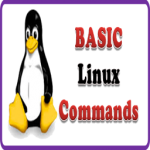Linux OS
now browsing by category
How to Increase the size of an LVM logical volume on Linux systems

In this article, I’ll show you how to increase the size of a LVM logical volume on Linux systems (RPM Family “Redhat / CentOS / Scientific Linux” and Debian Family “Debian / Ubuntu” and other families ). As a system administrator, you will face this scenario many times and youRead More

Increase the capacity of an LVM volume group on Linux Systems

In this article, I’ll show you how to increase the capacity of an existing LVM volume group by adding more physical volumes on Linux systems (RPM Family “Redhat / CentOS / Scientific Linux” and Debian Family “Debian / Ubuntu” and other families ). As a system administrator, you will faceRead More

How to Create a Logical Volume Using LVM on Linux Systems

In this article, I’ll show you how to create a new logical volume within an existing LVM volume group. It’s a simple and straight froward task which you will face a lot when managing Linux Systems. Prerequisites: a working installation of LVM2, and an existing LVM volume group with sufficientRead More

What is the Difference Between RAID 10 and RAID 01 (RAID 1+0 Vs RAID 0+1)

In this article, I’ll show you the difference between RAID 10 and RAID 01. RAID 10 is not the same as RAID 01. There are many differences between them and each one has it’s own advantages and disadvantages. This article explains the difference between the two with a simple diagram.Read More

A Simple Explanation for RAID 2, RAID 3, RAID 4, RAID 6 with Diagram

In this article, I’ll explain the main key points and differences between basic RAID systems. RAID stands for Redundant Array of Inexpensive (Independent) Disks. This article will show you the minimum hardware requirements and the advantages of different RAID types “RAID 2, RAID 3, RAID 4 and RAID 6” .Read More

A Simple Explanation for RAID 0, RAID 1, RAID 5 and RAID 10 with Diagrams

In this article, I’ll explain the main key points and differences between basic RAID systems. RAID stands for Redundant Array of Inexpensive (Independent) Disks. This article will show you the minimum hardware requirements and the advantages of different RAID types “RAID 0, RAID 1, RAID 5 and RAID 10” .Read More

How to Reduce the Size of an LVM Logical Volume

In this article, I’ll show you how to reduce the size of a LVM logical volume on Linux systems (RPM Family “Redhat / CentOS / Scientific Linux” and Debian Family “Debian / Ubuntu” and other families ). As a system administrator, you will face this scenario and you must knowRead More

How to Replace One of the Physical Volumes in an LVM Volume Group

In this article, I’ll show you how to replace the physical volumes safely from a LVM volume group on Linux systems (RPM Family “Redhat / CentOS / Scientific Linux” and Debian Family “Debian / Ubuntu” and other families ). As a system administrator, you will face this scenario and youRead More

How To Setup and Configure VsFTPd Server on CentOS/RHEL 7/6/5 Linux Systems

VsFTPd stands for Very Secure FTP Daemon. VSFTPD is the most popular ftp server. Also probably the most secure and fastest FTP server for UNIX-like systems. If you are searching an FTP server which can provide you Security, Performance and Stability then your searching is finished here, vsFTPd can beRead More

How To Use Screen Command on Linux Systems

In this article, we will show you how to install and use screen command on Linux systems(RPM Family “Redhat / CentOS / Scientific Linux / Fedora” and Debian Family “Debian / Ubuntu”). Screen is recommended with Linux servers that do not have a GUI to share sessions and run commandsRead More




